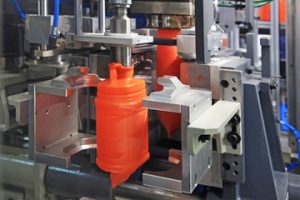Rosenberg Plumbing is a complex system that involves water supply, drainage and venting. It also requires knowledge of building codes and regulations to ensure safety and functionality.

Unlike residential plumbing, industrial plumbing systems are much larger and more complex. They must withstand higher water flow, corrosive substances and more. Hence, they require special materials and more advanced equipment.
The plumbing system in buildings is responsible for supplying clean water and removing wastewater, and it plays an important role in the health and comfort of the people inside. It includes pipes, valves, fixtures and fittings that connect the building to the water source, supply and drainage lines. Regular maintenance and repairs help keep the system functioning smoothly. A plumber can diagnose and resolve problems to prevent serious issues in the future.
Plumbing systems come in different configurations, but they all have the same basic components:
Water Supply Systems
The water supply system brings freshwater into buildings to be used for drinking, cooking, and other household tasks. Its pipes transport water at high pressure from the main supply line to faucets, showers, and other fixtures. It also includes a water meter that tracks usage and helps detect leaks. Water supply systems typically use PEX, PVC, or copper pipes for their durability and resistance to corrosion. Valves, like ball or gate valves, control water flow and allow for shutoff in emergencies.
Sanitary Drainage Systems
The sanitary plumbing system removes wastewater from toilets, showers, and sinks to keep homes and businesses clean and healthy. It works differently depending on the type of plumbing fixture, but all systems include a network of drain pipes that carry wastewater to the sewer or septic system. Some rely on gravity to let wastewater flow naturally, while others use pumps or vacuums to move the waste.
Venting Systems
The ventilation system keeps air pressure balanced and prevents toxic gases from accumulating in residential and commercial buildings. It consists of a series of pipes that connect the building to the gas and water lines. The pipe material and diameter depend on the type of system, but most have joints that seal tightly to prevent leaking. Frequent maintenance and inspections by a licensed plumber ensure that the venting system functions properly.
Plumbing Materials
The pipes used in plumbing systems can be made of different materials, and each material has advantages and disadvantages. The best choice for a project will depend on factors like the water pressure requirements, temperature variations, and whether the system is located indoors or outdoors. Choosing the right materials will ensure the longevity and efficiency of the plumbing system. A professional plumber can evaluate the project requirements and suggest the most appropriate materials for the job.
Rigid plumbing materials like copper and traditional PVC are effective for high-pressure systems, as they can withstand a wide range of temperatures and pressures. These materials are also durable and resist corrosion, scaling, and physical impacts. However, they are more expensive than flexible alternatives like PEX or CPVC.
Flexible plumbing materials are more economical and easier to install than rigid options, as they do not require welding or complex fittings. They are also effective for residential projects, and they can bend around corners without causing structural damage or requiring extra supports. However, they are not suitable for all plumbing applications, as they may not withstand excessive water pressure or react well to certain chemicals.
Polyvinyl chloride (PVC) is a popular option for drain lines, vent stacks, and water mains due to its durability and low cost. This plastic pipe resists corrosion and scale buildup, which reduces maintenance costs. It is also safe for potable water use, and its non-porous surface prevents bacterial growth and unpleasant odors. PVC is available in various thicknesses, known as schedules, to suit different plumbing needs.
ABS (acrylonitrile butadiene styrene) is an effective option for drainage, waste, and vent systems, as it offers resistance to corrosion, freezing, and dents. It is also lightweight, which makes it easier for plumbers to handle. However, it is prone to leaks and requires frequent maintenance.
Polyethylene (PEX) pipes are an effective alternative to traditional copper and PVC for hot and cold water lines. These pipes are lightweight, resistant to corrosion and scale buildup, and easy to install. They also have a low vapor transmission rate, which prevents condensation from forming inside the pipes and resulting in frost. PEX is also safe for drinking water, and its manufacturers use a color-coding system to make it easy for plumbers to identify the type of pipe they are working with.
Plumbing Regulations
Like any profession, plumbing is regulated by strict codes and standards. These guidelines govern everything from the materials used to how pipes are installed and inspected. By adhering to these standards, plumbers ensure that their work adheres to a set of minimum requirements that protects the public health and safety. Understanding these regulations is crucial for all plumbing professionals, whether they’re working on home renovations or installing new industrial systems.
Keeping up with these changes can be challenging, but it’s essential to remain compliant. The best way to do so is by educating yourself on the latest rules and regulations as they evolve. This can be done through a number of channels, including government websites, trade associations, industry publications, and educational events.
Understanding these standards is important not only for professional plumbers, but also for homeowners and property managers. With a better understanding of the principles behind them, these individuals can be more proactive in their maintenance and repair efforts. This can help them avoid costly mistakes and ensure that their plumbing systems are functioning properly.
In addition, adherence to these standards can protect the structural integrity of buildings by ensuring that plumbing systems are installed and maintained correctly. For example, non-compliance with venting and trap standards can lead to a buildup of sewer gases, which can cause an explosion that damages the structure. Similarly, failure to install plumbing correctly can result in leaks and water damage that compromise the integrity of a building.
Another important aspect of plumbing codes and standards is their role in promoting sustainability. By requiring efficient appliances and water-saving fixtures, these guidelines reduce waste and energy consumption and promote the use of more environmentally friendly practices.
In addition, compliance with these regulations can also improve worker safety by reducing the risk of accidents or injuries caused by leaks or other plumbing-related incidents. Moreover, it can reduce environmental harm by ensuring that hazardous substances are disposed of safely. Hence, it is critical for all businesses to keep up with these trends and comply with applicable regulations to ensure their long-term success.
Plumbing Codes
A plumbing code is a set of rules and regulations imposed by cities, counties and states on anyone who undertakes any work that involves the installation of drinking water, sewer or toilet facilities in homes, offices, factories, schools and hospitals. These codes are enacted to ensure that all work is done in a specific safe manner to avoid the spread of disease.
It is vital for every homeowner, builder and plumber to understand the significance of plumbing codes. They are essential in safeguarding the health, welfare and safety of all building occupants and the general public. Plumbing codes help prevent leaks, backflow contamination and provide adequate water pressure throughout the house. They also promote best practices that reduce water waste, protect natural resources and encourage sustainable building designs.
The Uniform Plumbing Code (UPC) is a modern code that helps ensure the proper installation of plumbing systems. The UPC sets minimum requirements and standards for the erection, construction, repair, alteration, relocation, replacement and use of plumbing fixtures, devices, pipes and appurtenances. The code consists of several sections dealing with various aspects of plumbing system design, materials and installation.
Some of the key principles include:
1. Leaving enough space around plumbing fixtures to facilitate function and maintenance.
2. Using the correct pipe sizes to minimize the risk of water loss or blockages.
3. Providing sufficient access to shutoff valves so that they can be quickly and easily closed in case of an emergency.
4. Installing cleanouts where clogs are possible, so that they can be easily cleaned or cleared.
5. Making sure that a plumbing system is installed with a backflow prevention device to keep potable water free from contamination from waste and sewer systems.


